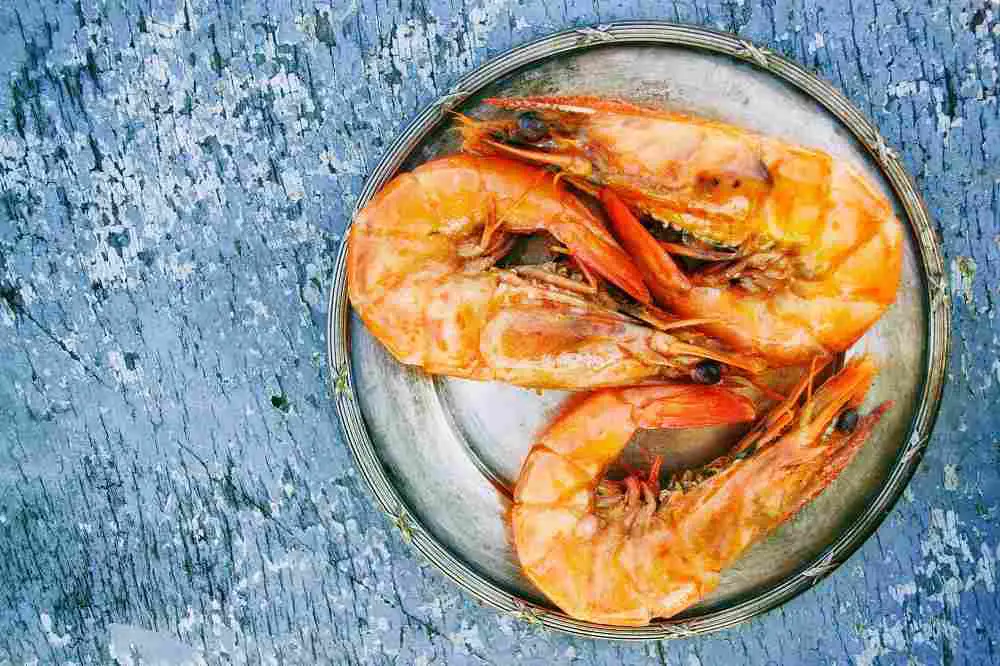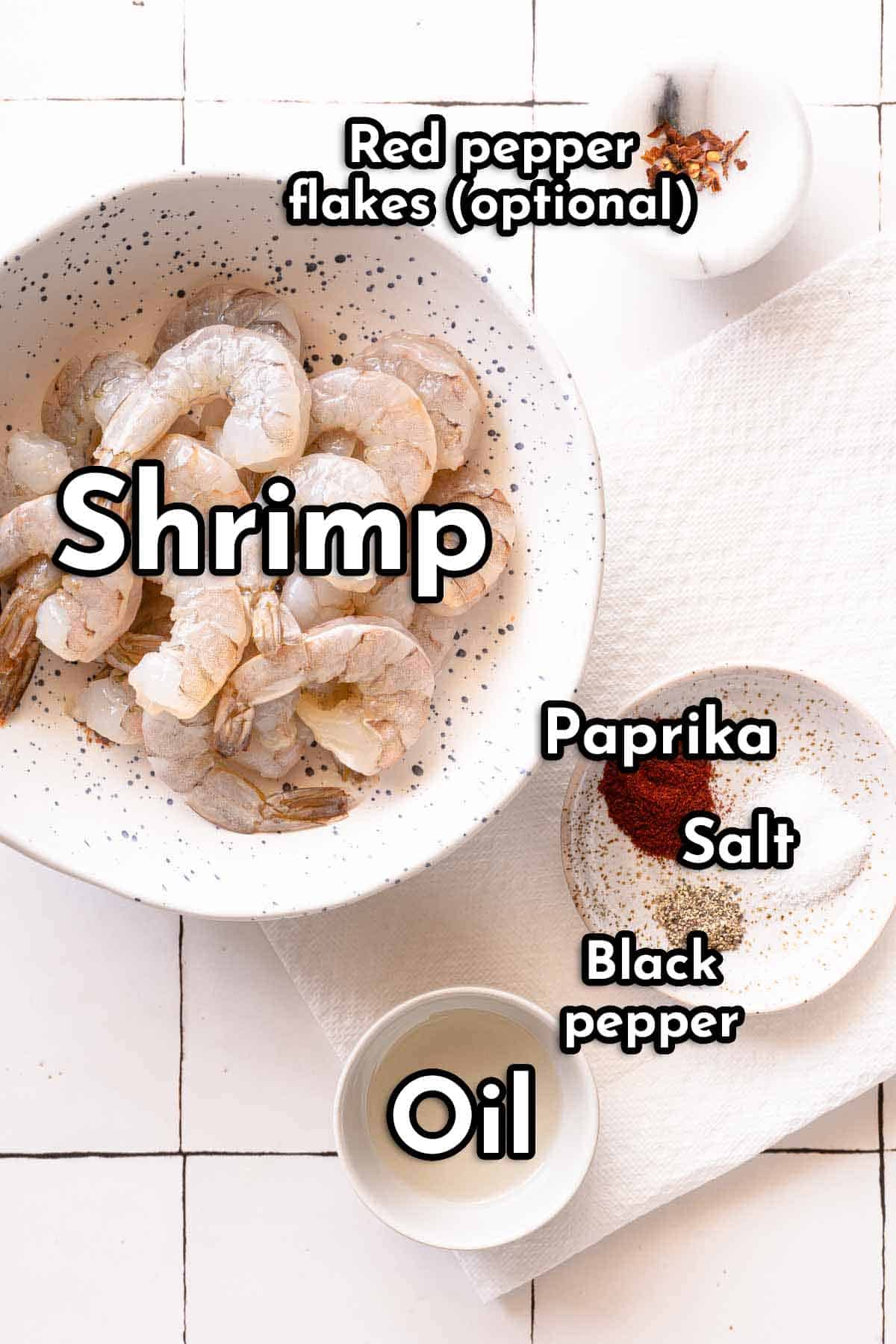To make this pan-seared shrimp recipe, you only need 10 minutes to get it ready to eat. Plus, there’s a special way to cook it that will give you tender, juicy shrimp with just the right amount of browning on the edges without overcooking them.
Pan seared shrimp has got to be one of the most simple and quick ways to prepare shrimp. All you need are peeled and deveined shrimp, a few basic seasonings, and a non-stick skillet.
Even though it’s easy and quick to sear shrimp, this pan seared shrimp is still a main dish to be proud of. Tender, juicy shrimp, perfectly seasoned, with a squeeze of fresh lemon juice, maybe a drizzle of melted butter. divine!.
Next, I’ll talk a little more about why pan searing shrimp is such a good method and how to cook shrimp so that they are always juicy and succulent and never overcooked!
Shrimp is a delicious and versatile ingredient that can be prepared in many different ways. One of the most popular cooking methods is pan searing, which results in shrimp with a crispy, browned exterior while keeping the interior moist and tender. But knowing exactly how long to sear shrimp can be tricky since shrimp cooks very quickly. Undercook it and the shrimp will be rubbery and raw tasting. Overcook it and you’ll end up with tough, chewy shrimp.
So how long should you sear shrimp to get it just right? Here’s a complete guide to searing shrimp including how long to cook shrimp on each side, signs of doneness, and tips for preventing overcooking. With this handy shrimp searing time guide, you’ll be able to achieve perfectly cooked, flavorful shrimp every time.
How Long Does it Take to Cook Shrimp
Shrimp cooks very quickly, usually in just 2-4 minutes total depending on the size Here are general shrimp cooking times
- Extra small shrimp (36-50 count): 1-2 minutes
- Small shrimp (31-35 count): 1 1⁄2 – 2 1⁄2 minutes
- Medium shrimp (26-30 count): 2-3 minutes
- Large shrimp (21-25 count): 2 1⁄2 – 3 1⁄2 minutes
- Extra large shrimp (16-20 count): 3-4 minutes
- Jumbo shrimp (10-15 count): 3 1⁄2 – 4 minutes
The shrimp count refers to how many shrimp there are per pound. So extra small shrimp means there are 36-50 shrimp in one pound.
Larger shrimp take longer to cook since there is more meat Smaller shrimp cook faster since there is less meat,
No matter what size your shrimp are, resist the urge to move them around too much or continuously flip while cooking. Shrimp need time to develop browned exterior. Constantly flipping and moving will prevent browning.
How Long to Sear Shrimp on Each Side
When searing shrimp, more time is needed on the first side to develop fond, the browned flavorful bits that build up on the pan’s surface. Fond adds tons of flavor.
Here are guidelines for shrimp searing times on each side:
- Small shrimp: 45-90 seconds per side
- Medium shrimp: 1-2 minutes on first side, 45-90 seconds on second side
- Large shrimp: 2 minutes on first side, 1 minute on second side
- Extra large shrimp: 2-2 1/2 minutes on first side, 1-1 1/2 minutes on second side
Sear the shrimp undisturbed on the first side until you see browning beginning to develop, about half the total cooking time. Then flip and cook for a shorter time on the second side.
How to Tell When Shrimp is Done
It can be tricky to tell when shrimp is fully cooked through since it’s easy to overcook. Here are signs to look for so you can pull the shrimp off the heat at just the right moment:
- Color: The shrimp will turn from translucent gray to solid opaque pink/white when fully cooked.
- Shape: When shrimp is cooked, it will curl and the tails will start to curl up.
- Texture: Shrimp is done when it feels firm yet yields slightly to pressure. It should not feel mushy.
The easiest way to check for doneness is to cut into a shrimp to peek at the interior. When fully cooked, the flesh should be opaque throughout. Translucent grayness means it needs more time.
Use tongs to grab shrimp from the tail end when flipping or removing them from the pan. This prevents them from breaking and allows you to get a better grip.
Tips for Perfectly Seared Shrimp
Follow these tips for foolproof shrimp with a flavorful sear every time:
- Pat shrimp dry before cooking. Excess moisture will cause steaming instead of searing.
- Use a hot pan. Preheat until the pan is very hot before adding shrimp.
- Don’t crowd the pan. Cook shrimp in a single layer with space between each one.
- Minimize moving. Resist the urge to move the shrimp too much for better browning.
- Butter burn risk. Butter can burn fast. Add oil or reduce heat if butter is burning.
- Use a instant read thermometer. Shrimp is safe to eat at 145°F.
What if I Overcook My Shrimp?
We’ve all done it – gotten distracted and left shrimp in the pan for too long. Lightly overcooked shrimp will still be edible but with a rubbery, chewy texture.
Here are some ways to use up overcooked shrimp:
- Chop or shred the shrimp into smaller pieces for shrimp tacos, pasta, or salad. Smaller pieces will be less noticeable.
- Make a shrimp dip or spread. The texture won’t matter as much when blended.
- Use in soups, chowders, or stir fries. The extra cooking time from these dishes can soften tougher shrimp.
While you may not be able to fully rescue overcooked shrimp, with some creativity you can still put it to good use.
Make Perfectly Seared Shrimp Every Time
Searing shrimp takes just minutes, but nailing the cooking time is key for tender, juicy shrimp with a satisfying crunch. Use this handy shrimp searing time guide to gauge the proper sear times based on shrimp size. Look for signs of doneness like opaque flesh and curled tails. With the proper technique and these tips, you’ll be able to achieve excellently seared shrimp each time.

How to pan sear shrimp perfectly
When developing this recipe, I came across this article from Cooks Illustrated: A Smarter Way to Pan-Sear Shrimp. And let me tell you, this was a game-changer for me! In my opinion, their cold-start method is the hands-down, best way for pan searing shrimp. Perfectly cooked (but not overcooked!) shrimp, with nicely browned edges, and a juicy, succulent interior.
Rather than getting the skillet screaming hot before adding the shrimp, this method does the reverse. First, the shrimp are placed in a cold skillet, and then heated. Once the bottom of the shrimp is browned, flip them over and cook the other side with the stove off. The residual heat from the pan is enough to finish the shrimp to perfection.
The cold-start method keeps the shrimp flat in the pan so they don’t twist up, which makes for more even browning. You can also have a lot more control over this protein, which is known for cooking quickly, with this gentler method. If you overcook it, you’ll end up with tough, chewy shrimp.
I adapted my easy recipe for pan seared shrimp using their cold-start method, so I want to give all the props to Cooks Illustrated, you should definitely check out their article on pan seared shrimp for more info!

- You will need jumbo shrimp that have been peeled and deveined and have been thawed (not frozen). Leaving the tails on (or off) is up to you.
- Salt: I used Diamond Crystal kosher salt, which is very flaky and light. So, if you use table salt instead, only use half of what the recipe calls for so you don’t add too much salt.
- Oil: You only need a neutral cooking oil, like vegetable oil or avocado oil.
Benefits of pan searing
- As I mentioned, pan searing shrimp is super quick. From start to finish, this recipe only takes about 10 minutes.
- You only need a non-stick skillet, some simple seasonings, shrimp, and a little oil. No special tools or long lists of ingredients are needed.
- By cooking the shrimp in a pan on the stove, you can easily keep an eye on how fast it’s cooking, which keeps it from getting too done.
